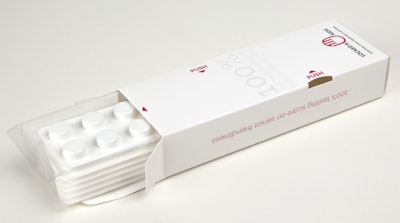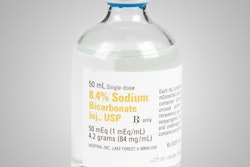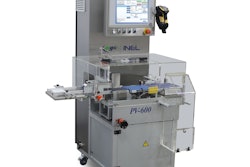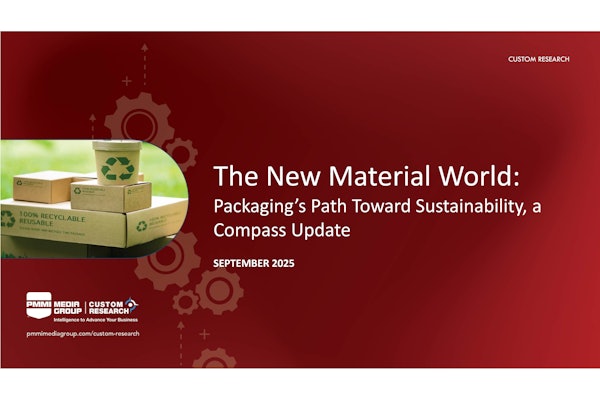Locked4Kids (L4K) is part of the Ecobliss Group, the producer of blister and high-visibility packaging. L4K’s award-winning packaging addresses the growing importance of child-resistant (CR) and senior-friendly medicine packaging, stemming from developing market factors.
One factor, says the company, is accidental medicine exposure for children under six years of age that result in more than 500,000 poison control center calls and 60,000 emergency room visits annually in the US. Also, Americans are taking more medicines than ever. Factor in the increase of three-generation households and nearby grandparents caring for young children and the result is more opportunity for accidental exposure to medicines. On the other hand, an aging population means more people with arthritis, grip strength, motor skill and vision issues that can make opening drug packaging difficult or impossible.
The patented Locked4Kids package uses interlocking components that incorporate a cognitive functioning child-resistant feature, which requires two hands performing different, simultaneous actions. Opening the package requires gently squeezing both side tabs at the same time with one hand, while pulling the tray outward with the other.
Closing is completed by pushing the tray back into the carton, much like sliding a dresser drawer back into place. An audible click confirms that the package is locked closed again. The patient can also see that the package is closed properly by the visible side tabs of the tray. If the tuck flap is left open, the package contents are still not accessible when the tray is locked in place.
The core package includes a 16-pt (or thicker) SBS folding carton and a PET thermoform tray, which are sourced through the company’s preferred suppliers, and are designed to be easy to produce. Locked4Kids uses two qualified multinational converters for the specialty film.
Blister strips with extended tabs allow them to be locked into the tray. Sachets, ampules, vials, tubes, injectibles and more can be attached to the tray and qualify as child-resistant. Since the core child-resistant feature is the carton and tray combination, this allows the attached blister strips, sachets and other single-dose items to be packaged without further child-resistant features, making the medicine easier to access.
It’s difficult for children to open the package due to the offset squeeze tabs that small hands can’t quite reach, a tear-resistant film lamination to the paperboard, a full adhesive seal, and a notched dust flap to prevent opening at the end flaps and glue flap of the carton.
Locked4Kids says the package is certified Child Resistant in Europe and in the U.S. at level F=1, delivering the highest level of protection. The width range certification has no limitation on a package’s length or depth, which allows safe packaging of greater product quantities or larger contents. The Senior Friendliness certification for Europe and the U.S. passed with 100% of seniors demonstrating they were able to open the package on the first attempt, without instruction.
Locked4Kids has conducted more in-depth consumer studies with hundreds of subjects, aged 20 to 90, demonstrating the same 100% success rate.
Available for leasing, the Locked4Kids package was initially developed in 2013. The pack won the Package of the Year Award from the New Jersey Packaging Executives Club before winning AmeriStar’s 2017 Best of Show Award honors.
Among the benefits earning recognition were the following:
• Innovation. The package locks blister strips and other pack types of medicine into the combination folding carton and attached plastic tray with a set of locking designs. Unlike other CR drug packages, this format allows for a variety of drug deliveries to be contained in the package, without the need for CR films required for some blisters and sachets.
• New design. The offset tabs make it difficult for children to squeeze them and open the carton. The locking functions of the tray (to blisters and to the carton) are also a new design, allowing for multiple strips and different types, sizes and shapes of products to be locked in safely. The design transfers packaging principles from other industries. The carton has a high-strength, tear-resistant film lamination, preventing children from tearing and biting the pack open. This feature is more commonly used as a theft-prevention feature for consumer products.
• Manufacturing advances. The package design allows for high-speed production on existing horizontal cartoning equipment, by using a few change parts, making it easier to adopt the format at manufacturing and packaging sites. That can minimize adoption cost and maximize production efficiency in the manufacturing plant and integrate into the existing distribution system. Also, the pack is designed to deliver packing/processing efficiencies in that filling can be executed on existing equipment at standard rates.
• Protection/stability. The blister protects the biological, chemical and/or physical integrity of the product, while the tray and carton protect the medicine from tearing or crushing. The full adhesive glue flaps at the back of the package deliver an additional impediment to accessing the package contents.
• Economics. Safe packaging prevents injury to young children and therefore helps reduce related medical costs. Also, the easy-to-open packaging for adults, combined with the blister packaging, may improve adherence. According to a New England Health Care Institute study, non-adherence to medication dosage is attributed to 28% of all emergency room visits in the U.S., adding to high health care costs, “estimated at $290 billion annually in the U.S.”
Cost savings can also come from distribution improvements in that the package can eliminate the pharmacy costs associated with counting pills and filling them in a vial. Using prefilled packs can reduce human errors, which also have cost implications.
• Environmental impact. The package tray and carton are recyclable. Drug packaging is not considered reusable, and recycled materials are not used due to the contamination risk and performance variability that may cause package failure. Blister packaging and other high barrier packaging is not recyclable for medicines, but the safety and stability benefits it delivers in medicine are said to outweigh the cost of high-barrier medical packaging.
Editors note: This is an expanded version of a story first posted May 26, 2017.






















